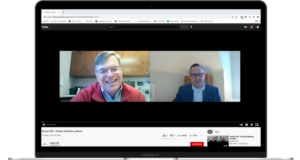ACCIDENT—NOW WHAT?!
What to Do In the Event of DOT Reportable Accident
Operating an 18-wheeler or any other type of CMV is stressful enough, but when accidents happen, it can be devasting for the parties involved. Whether you are the commercial driver or an owner of a trucking company that transports large amounts of goods, you must familiarize yourself with the post-accident procedures that can significantly help to minimize the long-term consequences.
To start, all transportation companies must follow the Department of Transportation (DOT) and Federal Motor Carrier Safety Administration (FMCSA) regulations that govern accidents. Here is what constitutes a DOT reportable accident and the post-accident testing requirements.
Drivers should understand what steps are required to be taken immediately after an accident, including what types of information should be gathered at the accident scene and how to efficiently record this information.
In all accidents, drivers must:
- Stop immediately and stay calm
- Assess the situation make sure everyone involved is safe, conscious and showing vital signs.
- Try to keep other additional accidents happening if possible.
- Set out Warning Devices
- Contact Law Enforcement
- Location of accident
- Number of vehicles involved
- Number of people involved
- Contact your Company (let your company advise on whether to give a statement at the time of the accident immediately to the responding officer or if necessary, the next day)
- Document the Incident (accident preliminary report – pictures – witness, etc)
- Watch what is said or done. Don’t admit to anything or to anyone. Keep facts – facts and opinions to yourself.
- Determine if your equipment is drivable but must also be roadworthy (means it must be safe to operate the CMV – if not have it towed)
- Seek medical treatment if needed.
- Complete Drug and Alcohol testing if required
- Report your moving citation if received to your motor carrier
- You may need to speak with your company’s insurance carrier or any other individual necessary under the direction of your company.
In all accidents, motor carriers must:
- Take the call from your driver
- Make sure to find out if your driver is ok and needs to seek medical attention immediately.
- If possible, deploy a member of management from the company to the site of the accident
- Provide constant support for your driver– even if that accident might have been your driver’s fault. This is not the time to determine this.
- Make sure the driver has:
- Called the law enforcement;
- Put their triangles out; and
- Seek to see if everyone is ok or not.
- Make sure to gather the facts of the accident:
- The exact location of the accident;
- Time of the accident;
- Estimate of injury/damage;
- A description of the damage to vehicles and/or property;
- Names and addresses of persons involved in the accident; Names and addresses of insurance companies of all persons involved;
- Type, make, and model of vehicles involved;
- License numbers of all vehicles involved; and
- The names and departments of the investigating officers.
- If DOT Reportable, document on Accident Register
- Determine if Drug and Alcohol testing is required
- Maintain a Claim Detail Report Diary / Accident File
- Keep track of who you have spoken to surrounding the accident;
- Keep track of all emails that reference the current accident;
- Keep track of all communication with the insurance company
- Police records;
- Driver statements ;
- Driver Diagrams;
- Pictures;
- GPS correspondence;
- Copy of last 7 days of driver logs;
- Copy of last 30 of DVIR for the alleged CMV involved in the accident;
- Towing bill;
- Any estimates of repairs;
- Repair bill;
- Copy of last annual inspection;
- Copy of drug and alcohol testing; and
- Copy of any maintenance issues in the last 12 months.
- Complete an accident register – 49 CFR 390.15
The register must include:
• The date of the accident;
• Where it occurred;
• The driver’s name;
• The number of injuries and/or fatalities; and
• Information on whether hazardous materials, other than fuel spilled from the fuel tanks of motor vehicles involved in the accident, were released.
- Complete an accident register – 49 CFR 390.15
The accident register must also include copies of all accident reports required by the state or other governmental entities. State regulations vary when it comes to filing accident reports. Check with law enforcement officials in the states your fleet travels in for specific details.
For more information on what accidents are reportable, post-accident drug & alcohol testing requirements, driver- and carrier-specific procedures, and accident register requirements, download our FREE infographic!




